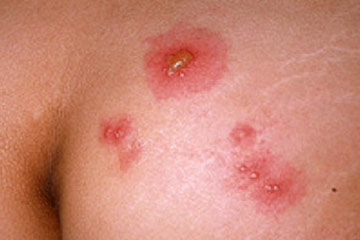Fármacos adyuvantes en el control del dolor en el Paciente con Cáncer
Los fármacos adyuvantes son valiosos durante todas las fases de control del dolor para mejorar la eficacia analgésica, tratar los síntomas concurrentes y proporcionar analgesia independiente para tipos específicos de dolor. Los adyuvantes incluyen las siguientes substancias:
- Los CORTICOSTEROIDES: proporcionan una variedad de efectos incluso levantar el ánimo temporalmente, actividad antiinflamatoria, actividad antiemética y estímulo del apetito, y pueden ser beneficiosos en el control de la caquexia y la anorexia. También reducen el edema cerebral y de la médula espinal y son esenciales en el control urgente de la presión intracraneal elevada y de la compresión epidural de la médula espinal. Los corticosteroides pueden ser utiles durante una crisis de dolor. La administración crónica aumenta el riesgo de depresión, agitación, hemorragia, diabetes, pérdida de músculo, infección y síndrome de Cushing. A pesar de que la terapia con esteroides es ampliamente aceptada, los datos resultan inadecuados para llegar a una conclusión definitiva sobre su eficacia y pautas de dosificación.[104-107]
- Los ANTICONVULSIVOS: se usan para controlar el dolor neuropático, especialmente el dolor lancinante o ardiente. Algunos agentes deben ser usados con cuidado en los pacientes con cáncer sometidos a terapias supresoras de la médula ósea, tales como la quimioterapia y la radioterapia.
- Los ANTIDEPRESIVOS: especialmente los tricíclicos, son útiles en el control del dolor neuropático. Estos fármacos tienen propiedades analgésicas innatas y pueden aumentar la potencia de los efectos analgésicos de los opioides. La experiencia de la que se ha informado más ampliamente ha sido con la amitriptilina; por lo tanto debe ser vista como el agente tricíclico de elección. Estas drogas tienen efectos secundarios anticolinérgicos que podrían añadirse a los efectos secundarios de los opioides.
- Los NEUROLEPTICOS: particularmente la metotrimepracina, se han usado para tratar síndromes de dolor crónico. La metotrimepracina carece de los efectos inhibidores de los opioides sobre la motilidad del intestino y puede ser útil para tratar el estreñimiento obstinado inducido por los opioides u otros efectos secundarios que limitan las dosis. También tiene efectos antieméticos y ansiolíticos. La metotrimepracina es sedante y puede causar hipotensión si se administra por medio de una inyección intravenosa rápida.
- Los ANESTESICOS LOCALES: se han usado para tratar el dolor neuropático. Los efectos secundarios incluyen trastorno gastrointestinal; requiere una evaluación cardiaca cuidadosa.
- La HIDROXICINA: un agente ansiolítico ligero con propiedades sedantes típicas de los agentes antihistamínicos (H1) que es útil para tratar al paciente ansioso que tiene dolor. Esta antihistamina también tiene propiedades antieméticas y antipruríticas.
- Los PSICOESTIMULANTES: pueden ser útiles para reducir la sedación inducida por los opioides cuando un ajuste de la dosis del opioide (o sea, reducción de dosis y aumento de la frecuencia de las dosis) no es eficaz.
Continuar leyendo acerca de Intervenciones Físicas y Psicosociales
Anuncios-
Bibliografía:
- Bruera E, Schoeller T, Fainsinger RL, et al.: Custom-made suppositories of methadone for severe cancer pain. Journal of Pain and Symptom Management 7(6): 372-374, 1992.
- Hunt G, Bruera E: Respiratory depression in a patient receiving oral methadone for cancer pain. Journal of Pain and Symptom Management 10(5): 401-404, 1995.
- Crews JC, Sweeney NJ, Denson DD: Clinical efficacy of methadone in patients refractory to other mu-opioid receptor agonist analgesics for management of terminal cancer pain: case presentations and discussion of incomplete cross-tolerance among opioid agonist analgesics. Cancer 72(7): 2266-2272, 1993.
- Sjogren P, Jensen NH, Jensen TS: Disappearance of morphine-induced hyperalgesia after discontinuing or substituting morphine with other opioid agonists. Pain 59(2): 313-316, 1994.
- Leng G, Finnegan MJ: Successful use of methadone in nociceptive cancer pain unresponsive to morphine. Palliative Medicine 8(2): 153-155, 1994.
- Thomas Z, Bruera E: Use of methadone in a highly tolerant patient receiving parenteral hydromorphone. Journal of Pain and Symptom Management 10(4): 315-317, 1995.
- Manfredi PL, Borsook D, Chandler SW, et al.: Intravenous methadone for cancer pain unrelieved by morphine and hydromorphone: clinical observations. Pain 70(1): 99-101, 1997.
- Bruera E, Watanabe S, Fainsinger RL, et al.: Custom-made capsules and suppositories of methadone for patients on high-dose opioids for cancer pain. Pain 62(2): 141-146, 1995.
- Bruera E, Pereira J, Watanabe S, et al.: Opioid rotation in patients with cancer pain: a retrospective comparison of dose ratios between methadone, hydromorphone, and morphine. Cancer 78(4): 852-857, 1996.
- Vigano A, Fan D, Bruera E: Individualized use of methadone and opioid rotation in the comprehensive management of cancer pain associated with poor prognostic indicators. Pain 67(1): 115-119, 1996.
- Mercadante S, Sapio M, Serretta R, et al.: Patient-controlled analgesia with oral methadone in cancer pain: preliminary report. Annals of Oncology 7(6): 613-617, 1996.
- Watanabe S, Belzile M, Kuehn N, et al.: Capsules and suppositories of methadone for patients on high-dose opioids for cancer pain: clinical and economic considerations. Cancer Treatment Reviews 22(Suppl. A): 131-136, 1996.
- Fainsinger R, Schoeller T, Bruera E: Methadone in the management of cancer pain: a review. Pain 52(2): 137-147, 1993.
- Ripamonti C, Zecca E, Bruera E: An update on the clinical use of methadone for cancer pain. Pain 70(2-3): 109-115, 1997.
- Ripamonti C, De Conno F, Groff L, et al.: Equianalgesic dose/ratio between methadone and other opioid agonists in cancer pain: comparison of two clinical experiences. Annals of Oncology 9(1): 79-83, 1998.
- O'Rourke MA, Shalabi A, Webb S: Methadone for treatment of cancer pain. JAMA: Journal of the American Medical Association 275(7): 519, 1996.
- Galer BS, Coyle N, Pasternak GW, et al.: Individual variability in the response to different opioids: report of five cases. Pain 49(1): 87-91, 1992.
- Sjogren P, Jonsson T, Jensen NH, et al.: Hyperalgesia and myoclonus in terminal cancer patients treated with continuous intravenous morphine. Pain 55(1): 93-97, 1993.
- Fainsinger RL, Bruera E: Is this opioid analgesic tolerance? Journal of Pain and Symptom Management 10(7): 573-577, 1995.
- MacDonald N, Der L, Allan S, et al.: Opioid hyperexcitability: the application of alternate opioid therapy. Pain 53(3): 353-355, 1993.
- Fainsinger R, Schoeller T, Boiskin M, et al.: Palliative care round: cognitive failure and coma after renal failure in a patient receiving captopril and hydromorphone. Journal of Palliative Care 9(1): 53-55, 1993.
- Bruera E, Schoeller T, Montejo G: Organic hallucinosis in patients receiving high doses of opiates for cancer pain. Pain 48(3): 397-399, 1992.
- de Stoutz ND, Bruera E, Suarez-Alzamor M: Opioid rotation for toxicity reduction in terminal cancer patients. Journal of Pain and Symptom Management 10(5): 378-384, 1995.
- Bruera E, Franco JJ, Maltoni M, et al.: Changing pattern of agitated impaired mental status in patients with advanced cancer: association with cognitive monitoring, hydration, and opioid rotation. Journal of Pain and Symptom Management 10(4): 287-291, 1995.
- Lawlor P, Turner K, Hanson J, et al.: Dose ratio between morphine and hydromorphone in patients with cancer pain: a retrospective study. Pain 72(1-2): 79-85, 1997.
- Fallon M: Opioid rotation: does it have a role? Palliative Medicine 11(3): 177-178, 1997.
- Mercadante S: Pathophysiology and treatment of opioid-related myoclonus in cancer patients. Pain 74(1): 5-9, 1998.
- Bruera E, Pereira J: Neuropsychiatric toxicity of opioids. Proceedings of the World Congress on Pain 8: 717-738.
- Hanks GW, Hoskin PJ, Aherne GW, et al.: Explanation for potency of repeated oral doses of morphine? Lancet 2(8561): 723-725, 1987.
- Pasternak GW, Bodnar RJ, Clark JA, et al.: Morphine-6-glucuronide, a potent mu agonist. Life Sciences 41(26): 2845-2849, 1987.
- Potter JM, Reid DB, Shaw RJ, et al.: Myoclonus associated with treatment with high doses of morphine: the role of supplemental drugs. British Medical Journal 299(6692): 150-153, 1989.
- Sear JW, Hand CW, Moore RA, et al.: Studies on morphine disposition: influence of renal failure on the kinetics of morphine and its metabolites. British Journal of Anaesthesia 62(1): 28-32, 1989.
- Glare PA, Walsh TD, Pippenger CE: Normorphine, a neurotoxic metabolite? Lancet 335(8691): 725-726, 1990.
- McQuay HJ, Carroll D, Faura CC, et al.: Oral morphine in cancer pain: influences on morphine and metabolite concentration. Clinical Pharmacology and Therapeutics 48(3): 236-244, 1990.
- Hagen NA, Foley KM, Cerbone DJ, et al.: Chronic nausea and morphine-6-glucuronide. Journal of Pain and Symptom Management 6(3): 125-128, 1991.
- Sjogren P, Dragsted L, Christensen CB: Myoclonic spasms during treatment with high doses of intravenous morphine in renal failure. Acta Anaesthesiologica Scandinavica 37(8): 780-782, 1993.
- Bowsher D: Paradoxical pain. British Medical Journal 306(6876): 473-474, 1993.
- Goucke CR, Hackett LP, Ilett KF: Concentrations of morphine, morphine-6-glucuronide and morphine-3-glucoronide in serum and cerebrospinal fluid following morphine administration to patients with morphine-resistant pain. Pain 56(2): 145-149, 1994.
- Smith M, Cramond T: Comments on Goucke et al. Pain 59(1): 155-156, 1994.
- Smith GD, Smith MT: Morphine-3-glucuronide: evidence to support its putative role in the development of tolerance to the antinociceptive effects of morphine in the rat. Pain 62(1): 51-60, 1995.
- Tiseo PJ, Thaler HT, Lapin J, et al.: Morphine-6-glucuronide concentrations and opioid-related side effects: a survey in cancer patients. Pain 61(1): 47-54, 1995.
- Ahmedzai S, Brooks D, on behalf of the TTS-Fentanyl Comparative Trial Group: Transdermal fentanyl versus sustained-release oral morphine in cancer pain: preference, efficacy, and quality of life. Journal of Pain and Symptom Management 13(5): 254-261, 1997.
- Derby S, Portenoy RK: Assessment and management of opioid-induced constipation. In: Portenoy RK, Bruera E, eds.: Topics in Palliative Care. Volume 1. New York, NY: Oxford University Press, 1997, pp 95-112.
- Bruera E, Suarez-Almazor M, Velasco A, et al.: The assessment of constipation in terminal cancer patients admitted to a palliative care unit: a retrospective review. Journal of Pain and Symptom Management 9(8): 515-519, 1994.
- Mancini I, Bruera E: Constipation in advanced cancer patients. Supportive Care in Cancer 6(4): 356-364, 1998.
- Payne R, Mathias SD, Pasta DJ, et al.: Quality of life and cancer pain: satisfaction and side effects with transdermal fentanyl versus oral morphine. Journal of Clinical Oncology 16(4): 1588-1593, 1998.
- Radbruch L, Sabatowski R, Loick G, et al.: Constipation and the use of laxatives: a comparison between transdermal fentanyl and oral morphine. Palliative Medicine 14(2): 111-119, 2000.
- Daeninck PJ, Bruera E: Reduction in constipation and laxative requirements following opioid rotation to methadone: a report of four cases. Journal of Pain and Symptom Management 18(4): 303-309, 1999.
- Bruera E, Brenneis C, Michaud M, et al.: Continuous Sc infusion of metoclopramide for treatment of narcotic bowel syndrome. Cancer Treatment Reports 71(11): 1121-1122, 1987.
- Meissner W, Schmidt U, Hartmann M, et al.: Oral naloxone reverses opioid-associated constipation. Pain 84(1): 105-109, 2000.
- Sykes NP: An investigation of the ability of oral naloxone to correct opioid-related constipation in patients with advanced cancer. Palliative Medicine 10(2): 135-144, 1996.
- Moulin DE, Iezzi A, Amireh R, et al.: Randomised trial of oral morphine for chronic non-cancer pain. Lancet 347(8995): 143-147, 1996.
- Aparasu R, McCoy RA, Weber C, et al.: Opioid-induced emesis among hospitalized nonsurgical patients: effect on pain and quality of life. Journal of Pain and Symptom Management 18(4): 280-288, 1999.
- Hanks G, Cherny N: Opioid analgesic therapy. In: Doyle D, Hanks GW, MacDonald N, eds.: Oxford Textbook of Palliative Medicine. 2nd ed. New York, NY: Oxford University Press, 1998, pp 331-355.
- Mannix KA: Palliation of nausea and vomiting. In: Doyle D, Hanks GW, MacDonald N, eds.: Oxford Textbook of Palliative Medicine. 2nd ed. New York, NY: Oxford University Press, 1998, pp 489-499.
- Bruera E, Seifert L, Watanabe S, et al.: Chronic nausea in advanced cancer patients: a retrospective assessment of a metoclopramide-based antiemetic regimen. Journal of Pain and Symptom Management 11(3): 147-153, 1996.
- Pereira J, Bruera E: Successful management of intractable nausea with ondansetron: a case study. Journal of Palliative Care 12(2): 47-50, 1996.
- Kalso E, Vainio A: Morphine and oxycodone hydrochloride in the management of cancer pain. Clinical Pharmacology and Therapeutics 47(5): 639-646, 1990.
- Cherny NJ, Chang V, Frager G, et al.: Opioid pharmacotherapy in the management of cancer pain: a survey of strategies used by pain physicians for the selection of analgesic drugs and routes of administration. Cancer 76(7): 1283-1293, 1995.
- Maddocks I, Somogyi A, Abbott F, et al.: Attenuation of morphine-induced delirium in palliative care by substitution with infusion of oxycodone. Journal of Pain and Symptom Management 12(3): 182-189, 1996.
- Drexel H, Dzien A, Spiegel RW, et al.: Treatment of severe cancer pain by low-dose continuous subcutaneous morphine. Pain 36(2): 169-176, 1989.
- Pereira J, Bruera E: Chronic nausea. In: Bruera E, Higginson I, eds.: Cachexia-Anorexia in Cancer Patients. New York, NY: Oxford University Press, 1996, pp 23-37.
- Lawlor PG, Bruera E: Side-effects of opioids in chronic pain treatment. Current Opinion in Anaesthesiology 11(5): 539-545, 1998.
- Hagen N, Swanson R: Strychnine-like multifocal myoclonus and seizures in extremely high-dose opioid administration: treatment strategies. Journal of Pain and Symptom Management 14(1): 51-58, 1997.
- Daeninck PJ, Bruera E: Opioid use in cancer pain. Is a more liberal approach enhancing toxicity. Acta Anaesthesiologica Scandinavica 43(9): 924-938, 1999.
- Vainio A, Ollila J, Matikainen E, et al.: Driving ability in cancer patients receiving long-term morphine analgesia. Lancet 346(8976): 667-670, 1995.
- Sjogren P, Thomsen AB, Olsen AK: Impaired neuropsychological performance in chronic nonmalignant pain patients receiving long-term oral opioid therapy. Journal of Pain and Symptom Management 19(2): 100-108, 2000.
- Zacny JP, Lichtor JL, Flemming D, et al.: A dose-response analysis of the subjective, psychomotor and physiological effects of intravenous morphine in healthy volunteers. Journal of Pharmacology and Experimental Therapeutics 268(1): 1-9, 1994.
- Bruera E, Macmillan K, Hanson J, et al.: The cognitive effects of the administration of narcotic analgesics in patients with cancer pain. Pain 39(1): 13-16, 1989.
- Galski T, Williams JB, Ehle HT: Effects of opioids on driving ability. Journal of Pain and Symptom Management 19(3): 200-208, 2000.
- Flacker JM, Cummings V, Mach JR Jr., et al.: The association of serum anticholinergic activity with delirium in elderly medical patients. The American Journal of Geriatric Psychiatry 6(1): 31-41, 1998.
- Mach JR Jr., Dysken MW, Kuskowski M, et al.: Serum anticholinergic activity in hospitalized older persons with delirium: a preliminary study. Journal of the American Geriatrics Society 43(5): 491-495, 1995.
- Mussi C, Ferrari R, Ascari S, et al.: Importance of serum anticholinergic activity in the assessment of elderly patients with delirium. Journal of Geriatric Psychiatry and Neurology 12(2): 82-86, 1999.
- Eisendrath SJ, Goldman B, Douglas J, et al.: Meperidine-induced delirium. American Journal of Psychiatry 144(8): 1062-1065, 1987.
- Marcantonio ER, Juarez G, Goldman L, et al.: The relationship of postoperative delirium with psychoactive medications. JAMA: Journal of the American Medical Association 272(19): 1518-1522, 1994.
- Bartlett SE, Cramond T, Smith MT: The excitatory effects of morphine-3-glucuronide are attenuated by LY274614, a competitive NMDA receptor antagonist, and by midazolam, an agonist at the benzodiazepine site on the GABAa receptor complex. Life Sciences 54(10): 687-694, 1994.
- Smith GD, Smith MT: The excitatory behavioral and antianalgesic pharmacology of normorphine-3-glucuronide after intracerebroventricular administration to rats. Journal of Pharmacology and Experimental Therapeutics 285(3): 1157-1162, 1998.
- Wright AW, Nocente ML, Smith MT: Hydromorphone-3-glucuronide: biochemical synthesis and preliminary pharmacological evaluation. Life Sciences 63(5): 401-411, 1998.
- Ashby M, Fleming B, Wood M, et al.: Plasma morphine and glucuronide (M3G and M6G) concentrations in hospice inpatients. Journal of Pain and Symptom Management 14(3): 157-167, 1997.
- Faura CC, Collins SL, Moore RA, et al.: Systematic review of factors affecting the ratios of morphine and its major metabolites. Pain 74(1): 43-53, 1998.
- Osborne R, Joel S, Grebenik K, et al.: The pharmacokinetics of morphine and morphine glucuronides in kidney failure. Clinical Pharmacology and Therapeutics 54(2): 158-167, 1993.
- Lawlor PG, Gagnon B, Mancini IL, et al.: Occurrence, causes, and outcome of delirium in patients with advanced cancer: a prospective study. Archives of Internal Medicine 160(6): 786-794, 2000.
- Fainsinger RL, Tapper M, Bruera E: A perspective on the management of delirium in terminally ill patients on a palliative care unit. Journal of Palliative Care 9(3): 4-8, 1993.
- Bruera E, Schoeller T, Wenk R, et al.: A prospective multicenter assessment of the Edmonton staging system for cancer pain. Journal of Pain and Symptom Management 10(5): 348-355, 1995.
- Lipowski ZJ: Delirium (acute confusional states). JAMA: Journal of the American Medical Association 258(13): 1789-1792, 1987.
- Breitbart W, Marotta R, Platt MM, et al.: A double-blind trial of haloperidol, chlorpromazine, and lorazepam in the treatment of delirium in hospitalized AIDS patients. American Journal of Psychiatry 153(2): 231-237, 1996.
- Breitbart W, Bruera E, Chochinov H, et al.: Neuropsychiatric syndromes and psychological symptoms in patients with advanced cancer. Journal of Pain and Symptom Management 10(2): 131-141, 1995.
- Burke AL, Diamond PL, Hulbert J, et al.: Terminal restlessness--its management and the role of midazolam. Medical Journal of Australia 155(7): 485-487, 1991.
- Portenoy RK, Lesage P: Management of cancer pain. Lancet 353(9165): 1695-1700, 1999.
- Mercadante S: Opioid rotation for cancer pain: rationale and clinical aspects. Cancer 86(9): 1856-1866, 1999.
- Portenoy RK: Tolerance to opioid analgesics: clinical aspects. Cancer Surveys 21: 49-65, 1994.
- Bruera E, Miller MJ, Macmillan K, et al.: Neuropsychological effects of methylphenidate in patients receiving a continuous infusion of narcotics for cancer pain. Pain 48(2): 163-166, 1992.
- Bruera E, Fainsinger R, MacEachern T, et al.: The use of methylphenidate in patients with incident cancer pain receiving regular opiates. A preliminary report. Pain 50(1): 75-77, 1992.
- Stiefel F, Bruera E: Psychostimulants for hypoactive-hypoalert delirium? Journal of Palliative Care 7(3): 25-26, 1991.
- Gomez-Marrero J, Feria M, Mas M: Stimulation of opioid receptors suppresses penile erectile reflexes and seminal emission in rats. Pharmacology, Biochemistry and Behavior 31(2): 393-396, 1988.
- De Leon G, Wexler HK: Heroin addiction: its relation to sexual behavior and sexual experience. Journal of Abnormal Psychology 81(1): 36-38, 1973.
- Pelosi MA, Sama JC, Caterini H, et al.: Galactorrhea-amenorrhea syndrome associated with heroin addiction. American Journal of Obstetrics and Gynecology 118(7): 966-970, 1974.
- Cicero TJ, Bell RD, Wiest WG, et al.: Function of the male sex organs in heroin and methadone users. New England Journal of Medicine 292(17): 882-887, 1975.
- Wang C, Chan V, Yeung RT: The effect of heroin addiction on pituitary-testicular function. Clinical Endocrinology (Oxford) 9(5): 455-461, 1978.
- Chan V, Wang C, Yeung RT: Effects of heroin addiction on thyrotrophin, thyroid hormones and prolactin secretion in men. Clinical Endocrinology (Oxford) 10(6): 557-565, 1979.
- Spagnolli W, Torboli P, Mattarei M, et al.: Calcitonin and prolactin serum levels in heroin addicts: study on a methadone treated group. Drug and Alcohol Dependence 20(2): 143-148, 1987.
- Paice JA, Penn RD, Ryan WG: Altered sexual function and decreased testosterone in patients receiving intraspinal opioids. Journal of Pain and Symptom Management 9(2): 126-131, 1994.
- Paice JA, Penn RD: Amenorrhea associated with intraspinal morphine. Journal of Pain and Symptom Management 10(8): 582-583, 1995.
- Oneschuk D, Bruera E: The "dark side" of adjuvant analgesic drugs. Progress in Palliative Care 5(1): 5-13, 1997.
- Hardy J, Ling J, Mansi J, et al.: Pitfalls in placebo-controlled trials in palliative care: dexamethasone for the palliation of malignant bowel obstruction. Palliative Medicine 12(6): 437-442.
- Hardy J: Corticosteroids in palliative care. European Journal of Palliative Care 5(2): 46-50, 1998.
- Feuer DJ, Broadley KE: Corticosteroids for the resolution of malignant bowel obstruction in advanced gynaecological and gastrointestinal cancer. Cochrane Database System Review (2): CD001219, 2000.
-
Bibliografía:






